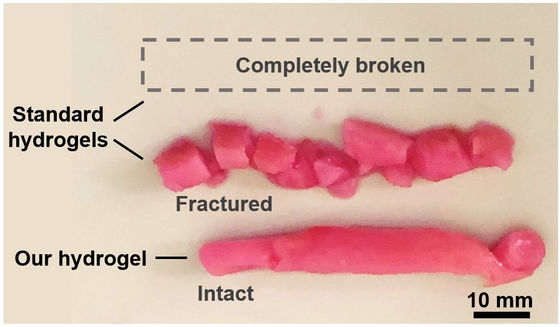Light for the development of a new corona remedy that develops biomaterials with strength that can regenerate the heart, muscles, and vocal cords

A research team from McGill University in Canada has developed a biomaterial that helps regenerate lost tissue by providing a scaffold for cells to grow. Since this biomaterial has sufficient strength, it can be used for muscle tissues such as vocal cords and heart, and it can be applied to the creation of lungs for research to develop a treatment method for new coronavirus infections. Is also expected to be useful.
Injectable, Pore-Forming, Perfusable Double-Network Hydrogels Resilient to Extreme Biomechanical Stimulations --Taheri ---- Advanced Science --Wiley Online Library
Synthetic tissue can repair hearts, muscles, and vocal cords --McGill University
https://www.mcgill.ca/newsroom/channels/news/synthetic-tissue-can-repair-hearts-muscles-and-vocal-cords-335206
Past research has revealed technology for regenerating body tissues such as organs with 3D printers and special gels that reproduce the environment around organs. However, for moving tissues such as the heart, which is a pump that constantly circulates blood, muscles that stretch and contract to move the body, and vocal cords that emit various sounds due to subtle vibrations, 'the strength of the material is not good. There was a problem that 'it is enough and the tissue in the middle of regeneration will be destroyed'.
Succeeded in creating human cornea with a 3D printer, it can be created quickly and inexpensively, and it is a light for global corneal shortage --GIGAZINE

This time, the hydrogel developed by the research team of Professor Luc Mongeau of McGill University is a biomaterial that becomes a space for living cells to grow, and when it is put into the body, it forms a stable porous structure and is damaged there. Supports the regeneration of damaged organs. Moreover, unlike conventional hydrogels, it has excellent strength, so it is also useful for regenerating moving tissues such as vocal cords.
The following is an image of vocal cord reproduction using this material. If a lesion such as a tumor is found in the vocal cords, the affected area is surgically incised and the pathological tissue is removed. By injecting the hydrogel developed this time into the gap after the excision surgery, it is possible to regenerate the vocal cords, which is the biomaterial developed this time, 'Porosity Double Network Hydrogel'. (porous double-network hydrogel: PDN) ”is a feature.

Guangyu Bao of McGill University, co-author of the paper, said, 'People who seek to recover a damaged heart often face troublesome problems, because the tissue of the heart keeps moving while the heart is beating. It's difficult to treat because it's so. It's the same with the vocal band. Nothing has ever been strong enough to deal with this problem. '
The research team has developed a machine that simulates the load on the human vocal cords in order to confirm the strength of the PDN developed this time. I tried to vibrate 120 times a second, more than 6 million times in total. As a result, the conventional hydrogel (top) could not withstand the vibration and was torn apart, while the PDN (bottom) remained intact.

According to the research team, this PDN has the potential to be applied to various applications such as research and development of treatment methods using living tissues that could not be made in the laboratory until now, in addition to regeneration technology. The research team plans to use PDN to make lungs for testing new coronavirus infections.
Related Posts:
in Science, Posted by log1l_ks







